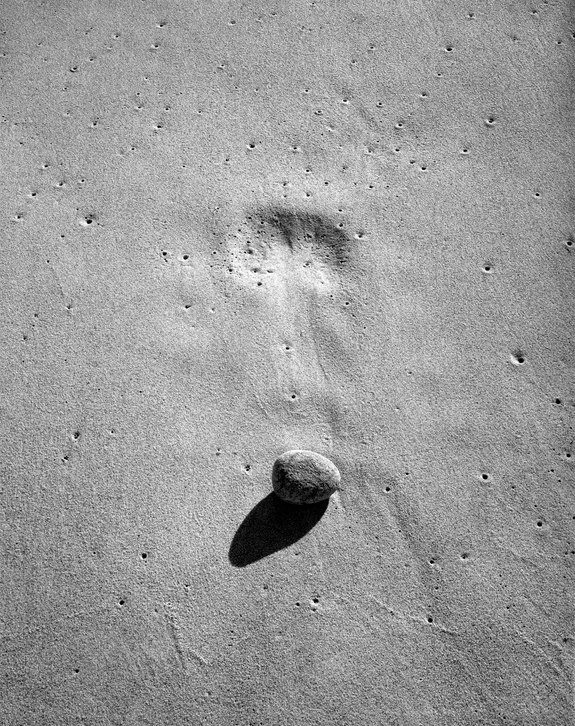“Objects on the beach, whether men or inanimate objects, look not only exceedingly grotesque but much larger and more wonderful than they actually are,” wrote Henry David Thoreau in 1852, reflecting on his walks along “The Great Beach,” the 28-mile outer coastline of Cape Cod that began at the same beach where I took this photograph 122 years later.
The backwash of a breaking wave filled the porous sand with water and air bubbles on this beach facing the Atlantic Ocean. The receding wave lifted a stone from its resting place and drew it down the slope. Water filtered through the grains of sand, forcing trapped air to rise and create tiny cavities on the beach. As these cavities burst, small depressions formed around them. Later, after the tide ebbed and the sand dried, I came upon this unexpected juxtaposition of the stone, its imprint, and this canvas of stippled sand.
Cape Cod is a glacial moraine composed of rock, sand, and silty rubble, spread by outflow streams emerging from the toes of melting glaciers that began 18,000 years ago. They also deposited glacial erratics, ranging from house-sized boulders to rare beach stones found along the shore. Since the last ice age, weathering has eroded the shoreline by a few feet each year. Major storms – like one that occurred four years after this photograph was taken – have caused episodic attrition in Coast Guard Beach. Thus, fifty years after this photograph was taken, its location now lies well offshore. The entire Cape is expected to vanish into the sea in several thousand years.
Location research and commentary by James Baker.

